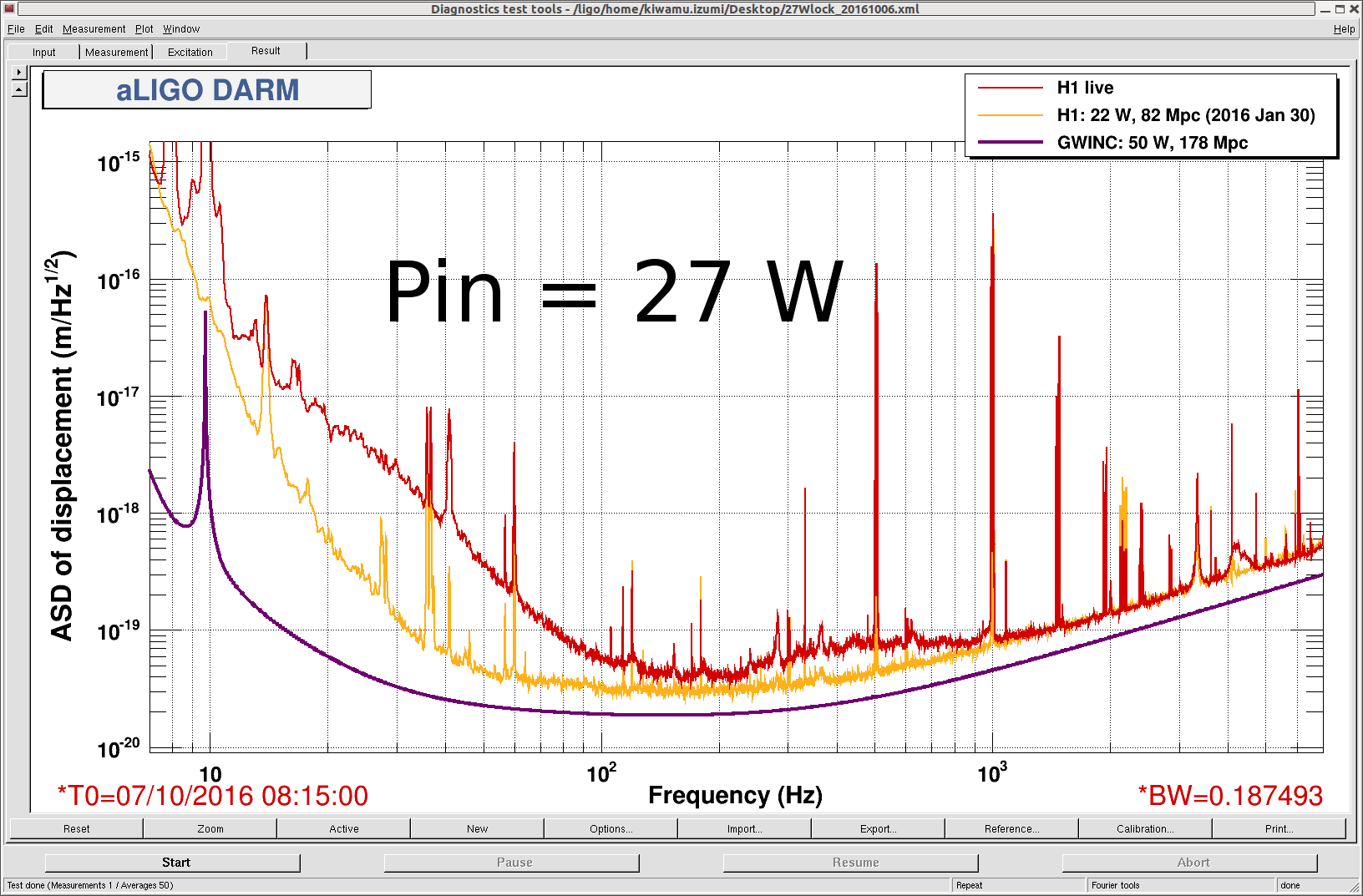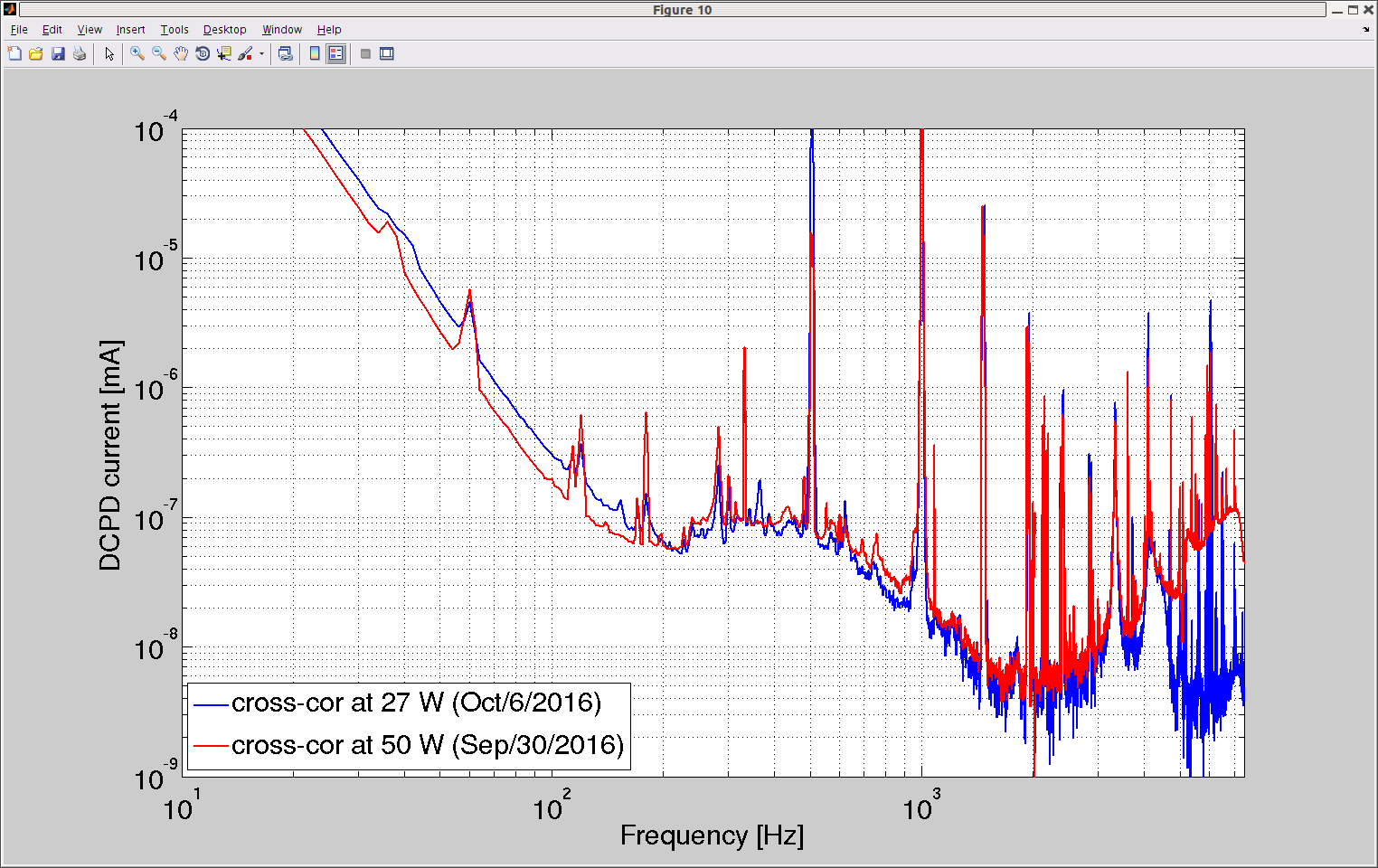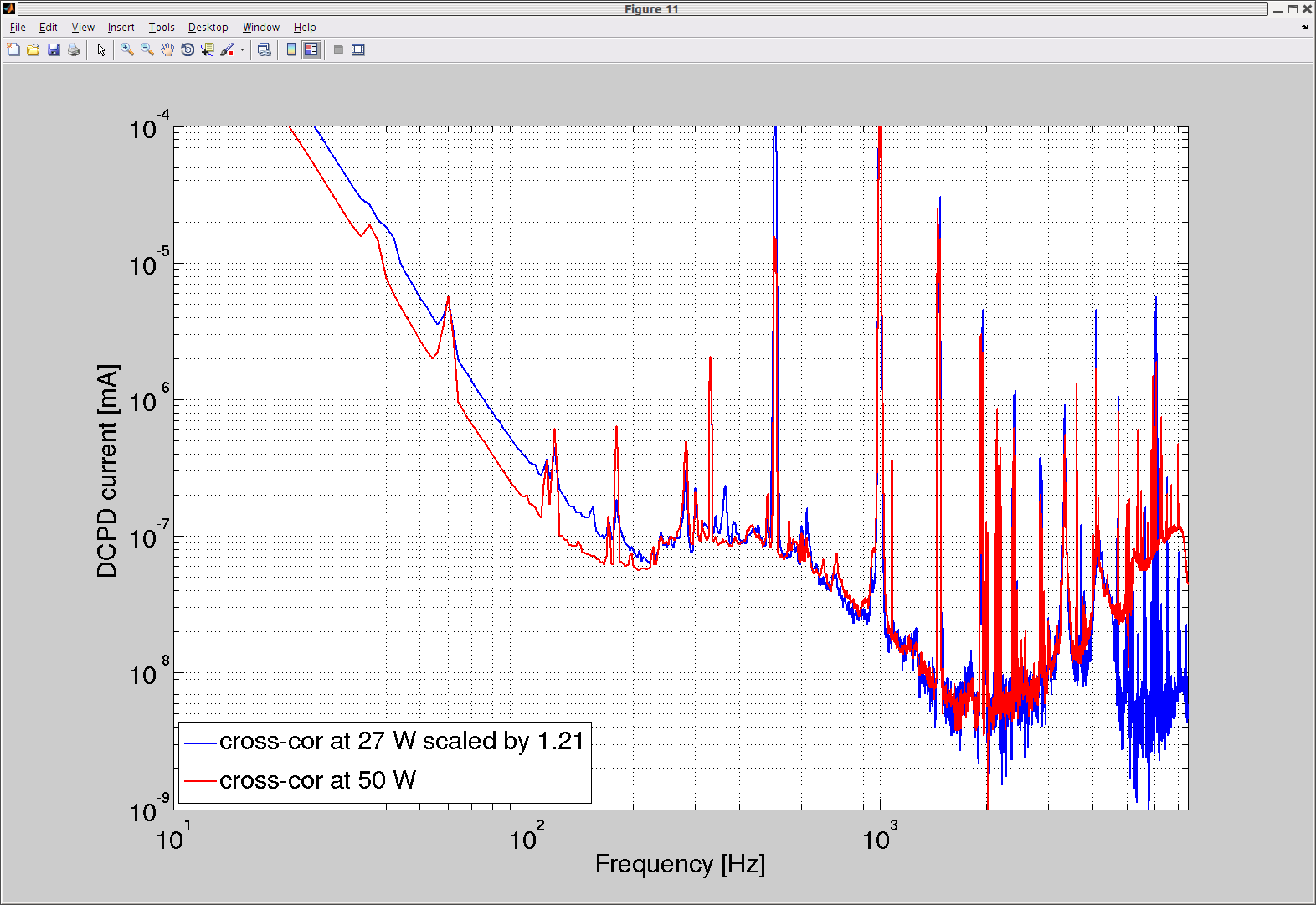Last night the IFO was locked stably for a long period of time, so I had a look of the coupling of the HPO jitter into DARM.
Stability of the coupling over time
I measured the transfer function from DBB_Q1Y (the largest one) with CAL_DELTAL every ten minutes, over the entire lock. It turns out that the shape of the transfer function is quite constant over time, while the overall gain was clearly changing, and increasing during the lock. The first attached plot shows a time-frequency plot of how the transfer function changed, with respect to the mean. In other words, the plot shows TF at a give time divided by the mean TF over the entire period. There is a clear trend to increase. This is also visible in the second plot, which shows the value of the TF in three selected bands, as a function of time. All three bands moves roughly in the same way.
Time domain subtraction
As done before, I computed and fitted the transfer function from DBB_Q1Y to CAL_DELTAL. Figure 3 shows the coherences for all DBB signals, and figure 4 shows the transfer function from Q1Y and the fit. Note that the coherence was somehow smaller than what measured yesterday. I converted the fitter transfer function to an IIR filter and computed the time domain subtraction. The improvement in sensitivity is there, but not quite as impressive as yesterday (see 30300), see figure 5. However, coherence with Q1Y is reduced basically to zero, see figure 6.
SInce there was some small coherence with Q1X, I measured and fitted that transfer function too, and then subtracted Q1X. The result is shown in figures 7 (spectra) and 8 (coherences). The improvement is small, but there is clearly no more coherence with any DBB signal.
Coherence with IMC WFS
At that point I looked at the coherence of the double subtracted DARM with the IMC WFS centering signals. As shown in figure 9, this coherence is very large and could explain a lot of the noise in the 100-1000 Hz region. Figure 10 shows a coherence-based estimation of the subtracted noise. Unfortunately, the transfer function from IMC-WFS to DARM is very complex, and a time domain subtraction is not easy to do.
We should work on improving the IMC alignment, this used to be the right cure to reduce the coupling of jitter peaks into DARM.












































04:05 UTC Have been stable at CARM_10PM for over 40 min. Lost lock immediately after running ezca.switch('LSC-REFLBIAS', 'FM2', 'ON')